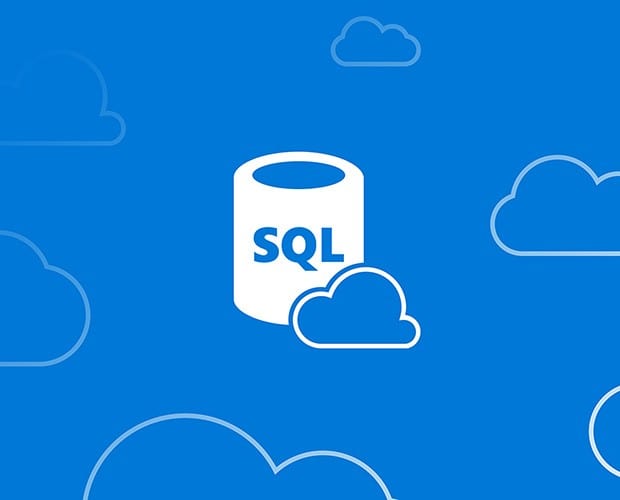SQL From Intermediate to Advanced Level

Get ready for your exam by enrolling in our comprehensive training course. This course includes a full set of instructional videos designed to equip you with in-depth knowledge essential for passing the certification exam with flying colors.
$14.99 / $24.99
Software Installation
-
1. Having The Database with Oracle VirtualBox16m 29s
Introducing Database Objects
-
1. Introducing Database Objects and Reaching Another User's Objects9m 34s
-
2. Reaching Another User's Objects6m 21s
Data Dictionary Views
-
1. What Are Data Dictionary Views?1m 15s
-
2. What Is There In Data Dictionary Views?1m 12s
-
3. Dictionary Table3m 18s
-
4. Differences Between USER, ALL, DBA, V$ Prefixes1m 31s
-
5. USER_OBJECTS, ALL_OBJECTS, DBA_OBJECTS Views9m 13s
-
6. USER_TABLES View5m 11s
-
7. USER_TAB_COLUMNS View5m 4s
-
8. User Constraints View9m 47s
-
9. USER_CONS_COLUMNS View5m 29s
-
10. USER_TAB_COMMENTS & USER_COL_COMMENTS Views3m 42s
Creating, Using and Managing Sequences
-
1. What is a Sequence and Why is It Used For?1m 27s
-
2. Creating Sequences6m 42s
-
3. Modifying Sequences2m 48s
-
4. Dropping Sequences1m 23s
-
5. Using Sequences9m 8s
-
6. Using Sequences As a Default Value4m 30s
-
7. Sequence Caching2m 28s
-
8. User Sequences2m 29s
Creating, Using and Analyzing Synonyms
-
1. What Is a Synonym and Why Is It Used For?2m 32s
-
2. Creating & Dropping Synonyms7m 3s
-
3. Using Synonyms2m 34s
-
4. Analyzing USER_SYNONYMS3m 43s
Understanding Indexes
-
1. What is an Index and Why is It Used For?2m 43s
-
2. Types of Indexes2m 19s
-
3. Creating Indexes7m 47s
-
4. Creating Index on Table Creation7m 44s
-
5. Function Based Indexes4m 32s
-
6. Multiple Indexes With Same Columns9m 4s
-
7. Dropping Indexes2m 52s
-
8. USER_INDEXES and USER_IND_COLUMNS Views4m 3s
Managing Views
-
1. What is a View and Why Is It Used For?2m 52s
-
2. Types Of Views1m 58s
-
3. Creating Simple Views12m 17s
-
4. Creating Complex Views4m 35s
-
5. Modifying Views3m 37s
-
6. Analyzing User Views3m 20s
-
7. Performing DML Operations with Views6m 41s
-
8. Using WITH CHECK OPTION Clause10m 54s
-
9. Preventing DML Operations on A View2m 22s
-
10. Dropping Views2m 2s
Materialized Views
-
1. What is a Materialized View and Why is it Used For?5m 2s
-
2. Creating Materialized Views Part 16m 32s
-
3. Creating Materialized Views Part 24m 54s
-
4. Complex Materialized Views3m 50s
-
5. Types of Refreshing Materialized Views9m 53s
-
6. Refreshing Materialized Views Manually10m 31s
-
7. Scheduling Periodic Refresh of Materialized Views1m 40s
Using Advanced Subqueries
-
1. Using Subqueries as a Source5m 40s
-
2. Scalar Subqueries9m 11s
-
3. Multiple Column Subqueries7m 21s
-
4. Correlated Subqueries4m 10s
-
5. EXISTS Operator5m 16s
-
6. NOT EXISTS Operator4m 56s
-
7. Using WITH Clause6m 31s
-
8. Using Recursive WITH Clause5m 33s
-
9. Inserting Data By Using a Subquery as a Target7m 6s
-
10. Manipulating Data by Using "WITH CHECK OPTION" Keyword6m 24s
-
11. Correlated Delete2m 23s
-
12. Correlated Update6m 15s
Advanced Data Manipulations
-
1. Using DEFAULT Keyword on Insert And Update Statements5m 45s
-
2. Multitable Insert Statements1m 20s
-
3. Unconditional Insert Statements6m 31s
-
4. Conditional Insert Statements8m 7s
-
5. Conditional Insert First Statements5m 21s
-
6. Pivoting Insert4m 28s
-
7. Merging Data10m 3s
-
8. Flashback Operations11m 6s
-
9. Purge Operations4m 2s
-
10. Tracking Changes In Data In a Particular Time1m 28s
-
11. FLASHBACK Query6m 31s
-
12. FLASHBACK VERSIONS Query4m 57s
Constraints (Controlling Schema Objects)
-
1. Adding Constraints7m 21s
-
2. Removing Constraints3m 51s
-
3. On Delete CASCADE & On Delete SET NULL9m 35s
-
4. Cascading Constraints3m 57s
-
5. Renaming Constraints2m 40s
-
6. Disabling Constraints3m 2s
-
7. Enabling Constraints2m 34s
-
8. Status Of Constraints3m 4s
-
9. Deferring Constraints13m 48s
-
10. Creating Temporary Tables10m 28s
Administering User Privileges and Roles
-
1. What Are Privileges And Why Are They Used For?2m 46s
-
2. Creating A User3m 55s
-
3. System Privileges3m 58s
-
4. Granting System Privileges7m 7s
-
5. What is A Role and Why is It Used For?4m 28s
-
6. Changing The User Password5m 5s
-
7. Object Privileges2m 2s
-
8. Granting Object Privileges10m 29s
-
9. Revoking Object Privileges3m 13s
-
10. Searching For Privileges in Data Dictionary Views6m 44s
Hierarchical Queries (Tree Structure)
-
1. Understanding Hierarchical Retrieval2m 48s
-
2. Generating Hierarchical Queries3m 12s
-
3. Walking On The Tree (Bottom to Up - Up to Down)7m 12s
-
4. Ranking Rows (Using LEVEL Pseudocolumn)4m 6s
-
5. Formatting Tree Structure (LEVEL & LPAD)3m 59s
-
6. Pruning Branches Of a Tree3m 51s
Generating Dynamic SQL Scripts
-
1. Generating Scripts By Using Data Dictionary Views6m 4s
Regular Expressions
-
1. What is Regular Expressions and Why and Where Do We Use Them?2m 22s
-
2. What Are Metacharacters?13m 37s
-
3. Regular Expression Functions2m 34s
-
4. Using REGEXP_LIKE() function4m 45s
-
5. Using REGEXP_REPLACE() Function10m 18s
-
6. Using REGEXP_SUBSTR() Function8m 34s
-
7. Using REGEXP_INSTR() Function6m 11s
-
8. Using REGEXP_COUNT() Function4m
-
9. Using REGEX in Constraints4m 59s
Analytical SQL Functions (New Videos: Sep, 2017)
-
1. What are the Analytic Functions?12m 34s
-
2. ROW_NUMBER Analytic Function4m 22s
-
3. RANK and DENSE_RANK Analytic Functions4m 51s
-
4. LEAD & LAG Analytic Functions (Next & Previous Values)8m 13s
-
5. Windowing Clause in Analytic Functions - Part 110m 56s
-
6. Windowing Clause in Analytic Functions - Part 29m 16s
-
7. INTERVAL Keyword In Analytic Functions4m 26s
-
8. FIRST_VALUE and LAST_VALUE Analytic Functions..6m 46s
-
9. Selecting Top-N Rows with Analytic Functions4m 22s

